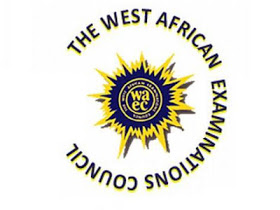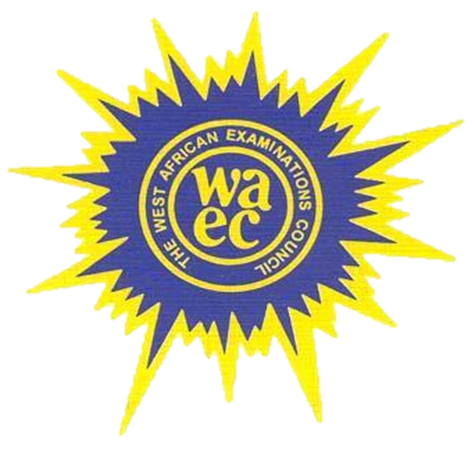NECO 2019 Economics Obj And Essay Answer – June/July Expo «
WELCOME TO AYOSTUFFS NECO 2019
INVITE YOUR FRIEND AND FAMILY TO AYOSTUFFS.BLOGSPOT.COM WE POST SURE ANSWER

ALWAYS SUBSCRIBE IF YOU WANT FAST ANSWERS/BEFORE THE EXAM…
WE FOCUS MORE ON THE SUBSCRIBERS
BECAUSE THEY ARE THE MORE SERIOUS ONE..
FOR MORE CONTACT US WHATSAPP 07060807249
===============================
KEEP REFRESHING IN EVERY 5MIN
==============================
*NECO 2019 JUNE/JULY ECONOMICS OBJ & THEORY ANSWERS*
OBJ
1-10: EDCBEEEEBA
11-20: CAEADACEEB
21-30: ABCEEAEEBA
31-40: CECEABDABA
41-50: CBCDCCAABA
51-60: CAEDCCACDB
✅✅✅✅👍✅✅✅✅
*THEORY*
*SECTION A*
(1i)
*Tabulate*
Under Age group:
0 - 17
18 - 35
36 - 60
61 and above
Under population:
15,000
11,000
25,000
9,000
Total 60,000
Under sectoral angles
15000/60000 × 360° = 90°
11000/60000 × 360° = 66°
25000/60000 × 360° = 150°
9000/60000 × 360° = 54°
Draw the chart
18-35years
0-17years
36-60years
61and above Years
(1ii)
Dependency ratio
= (0-17years) + (61and above Years)/(18-35)+(36-60)
= 15000+9000/11000+25000
= 24000/36000
= 2/3 or 2:3
(1iii)
Since the ratio is high its going to lead to
(i) Pressure to raise retirement age
(ii) Higher government spending
(iii) Lower tax revenue
(iv) Reduction in productivity growth
(1iv)
% labour force = 11000+25000/60000×100%
= 60%
*SECTION B*
(3i)
Scale of preference can be defined as a list of unsatisfied wants of an individual,firm or government,arranged inorder of priority ,starting from the most important to the least important.
(3ii)
*[Choose Any Four]*
(i) Ranking of needs:Scale of preference helps us to rank our needs or wants in order of their relative importance
(ii) Identification of highest priority: Scale of preference assists individuals to identity quickly the most important needs among others
(iii) Rational choice: Scale of preference assists individuals, firms and governments to make rational choices in the list of wants
(iv) Efficient utilisation of limited resources: Scale of preference also helps individuals to make efficient utilisation of available resources
(v) Optimum allocation of resources: Scale of preference facilitates optimum allocation of resources
(vi) Maximisation of satisfaction: Scale of preference enables economic agents to maximise their satisfaction.
(vii) Financial prudence: Scale of preference does assist in managing our finances properly
(4a)
Division of labour is defined as the breaking down of a production process into a number of separate operations ,whereby each operation is undertaken or performed by one person or a group of persons
(4b)
*Merit*
(i) Increase in production: Division of labour and specialisation lead to increase in production because the various experts along the production process work together to boost greater production.
(ii) Time saving: Division of labour helps to save time that would have been wasted in moving from one operation to another.
(iii) Development of greater skill: Division of labour enables each workers to develop greater skills through repetition of the same process
*Demerits*
(i) Monotony and repetition: In division of labour,a worker perform the same job on daily basis, the job therefore becomes monotonous and boring to him and this may lead to Loss of interest in the job being done
(ii) Decline in craftsmanship: As a result of the use of machines in division box labour, people no longer makes use of their skills in the production of goods, rather, they become machine minders.
(5i)
Public enterprise is a business organizations established, owned, manages and financed with tax payers money by government of a country with the main motive of not making profit but to provide essential services to members of the public. Public Enterprises are owned by government.
(5ii)
(i) Government Interference: This results in square pegs being put in round holes as general managers and members of board of directors are appointed on political basis. An adage has it that he who pays the Piper dictated the tune.
(ii) Huge capital is needed: This goes further in making their establishment more difficult.
(iii) Delay in policy and decision formulation: This is because their decisions and policies are taken and made by members of the board of directors, subject to government ratification.
(iv) Bureaucracy: There are lots of complicated systems of administrations and a lot of red-tapism in them.
(7i)
Mortgage banks are financial institutions that extend collateralized credit to consumers and commercial customers while commercial bank is a type of bank that provides services such as accepting deposits, making business loans, and offering basic investment products that is operated as a business for profit.
(7ii)
(i) Accepting Deposits: Commercial banks accept deposits from people, businesses, and other entities.
(ii) Lending of Funds: Another important activity is lending funds to customers in the form of loans and advances, cash credit, overdraft and discounting of bills , etc.
(iii) Financing Foreign Trade: A commercial bank helps in foreign trade by financing his customers and by accepting foreign bills of exchange.
(iv) Agency Service: A bank discharges agency services on behalf of its customers.
(9i)
Public revenue is the total income accrues to all levels of administration (local, state and federal) or government from various sources. It includes all the capital revenue (receipts) and recurrent revenue.
(9ii)
(i) Taxes
(ii) Commercial Revenue or Prices.
(iii) Fees.
(iv) License Fee.
(v) Special Assessment.
(i) Taxes: It is one of the most important sources of public revenue. Taxes are compulsory payments to Government without exec of direct return or benefit to the tax payer”. It is a compulsory contribution of a citizen for the service of the Government towards public expenditure.
(ii) Commercial Revenue or Prices: The price is the payment of goods and services sold to them by the government. For example, fares and freights charged by the railways or roadways for transport services or electricity charged paid by citizens for electricity consumption etc.
(iii) Fees: Fee is the payment made by citizen for non-economic services rendered by the
Government . It refers to a payment for special benefits received by a fee-payer. Fee is a payment for services rendered for the benefit of the whole society.
(iv) License Fee: A license fee is paid in such cases where the Government authority confer a permission or a privilege rather than to perform a service of a more tangible and definite sort. Registration fee is one of the examples of this kind of revenue.
(v) Special Assessment: Where the Government provides certain services to the residents of a particular locality by which the value of the properties of residents increases, the Government or the authority may impose a special type of levy based upon the increase in the value of properties, on the residents of that very locality which is known as special assessment or better merit levy.
(10i)
Trade by barter may be defined as a form of trading in which goods are exchanged directly for other goods without the use of money as a medium of exchange .
(10ii)
*[Pick Any Four]*
(i) Problems of double coincidence of wants: This involves looking for someone who is in need of what you have and at the same time has what you need. To do this amounts to a very serious problem.
(ii) No fixed rate of exchange: There is the problem of exchange rate determination between two products. Different rates of exchange have to be determined to cover every transaction before it can take place ,e.g how much of Garry will exchange for beans.
(iii) Wastage of time and effort: Barre system leads to waste of time and energy because one has to search for somebody to exchange the goods with.
(iv) Problem of indivisibility: Many goods cannot be divided into small convenient units because they are heavy and indivisible so it does not encourage divisibility.
(v) Problems created by bulkiness of some goods: Some of the goods to be exchanged are so bulky that one finds it difficult to carry them about.
COMPLETED



Comments
Post a Comment